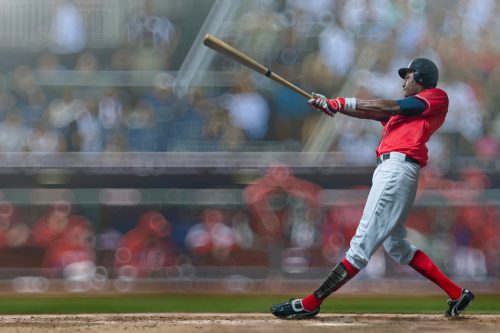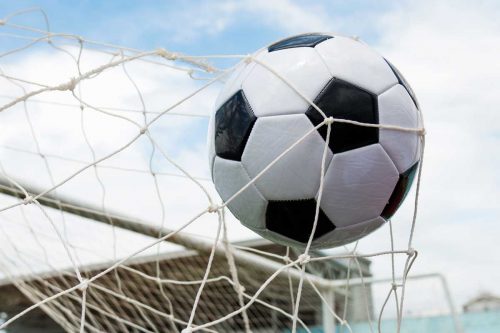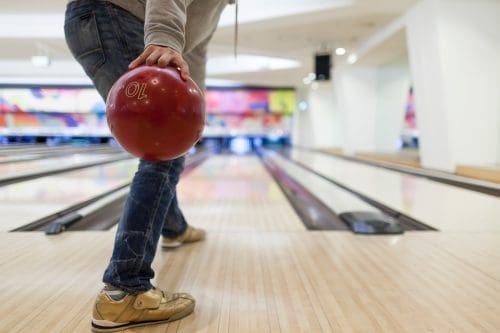Purchasing stylish football cleats is one of the ways to express yourself out on the field. They come in a variety of colors and styles. After taking them out of the box, you'll usually have to break them in. However, what happens if they hurt your feet? If that's your concern, let's go over the details.
There are several reasons why your feet can hurt after wearing football cleats. If it's a new pair of cleats, you might need a few days to break them in. When it keeps straining your feet, you might have to consider trying to break them in with various methods. Should the pain still occur after this, consider purchasing different cleats.
Although they might be stylish, people have different feet. And, if you try to fit a wide foot in a narrow shoe, you're fighting a losing battle. If you want to find out how to find the perfect cleats for your feet, keep reading ahead.

Why Cleats Can Hurt Your Feet
Although cleats come in many colors and styles, there are a few glaring problems that they bring along too. If you want to see what's causing the pain, you can do a simple test. All you need to do is take out the insole of the cleats.
Then, take your foot and place it over the insole. In most cases, you will find that your foot does not fit. Part of your toe will likely hang off on one side.

So, that's where the problem lies. Most brands make cleats that can fit almost anyone. However, that doesn't mean they'll always work. They're often narrow in the toe area. In this situation, you might have wider feet than other people.
Here's a YouTube video demonstrating the problems mentioned:
The video focuses on weightlifting shoes. But, the problem is the same. As you can see from the demonstration in the video, you're most likely pinching your toes to make it fit.
Should Football Cleats Be Tight Or Loose?
If you're forcing your foot to fit into a football cleat, foot pain isn't the only thing awaiting you. According to adidas, a football cleat should fit snugly around your foot without slipping. However, you should also have adequate room for your toes to move.
Sure, they might fit enough for you to play in them. But, when you use an incorrect shoe shape for your foot, you're more likely to develop toe deformities. It's how people develop bunions, hammertoes, or ingrown toenails.
Since cleats are for sports, football more specifically, you're also putting yourself at risk for injuries. It's a topic the video above mentions. Your foot is a natural stabilizer.
It provides a stable platform for the rest of your leg to function. When you fit a wide foot into a narrow shoe, you're changing the functionality and biomechanics of your foot.
A less stable foot can lead to metatarsal fractures, Hallux Rigidus, and more potentially season-ending injuries.
For this reason, it's crucial to find the right cleats for your feet. And, if it's difficult to find the right pair, modify them. This way, you can avoid the pain and let your feet perform as they should.
How Can You Break In A Football Cleat?
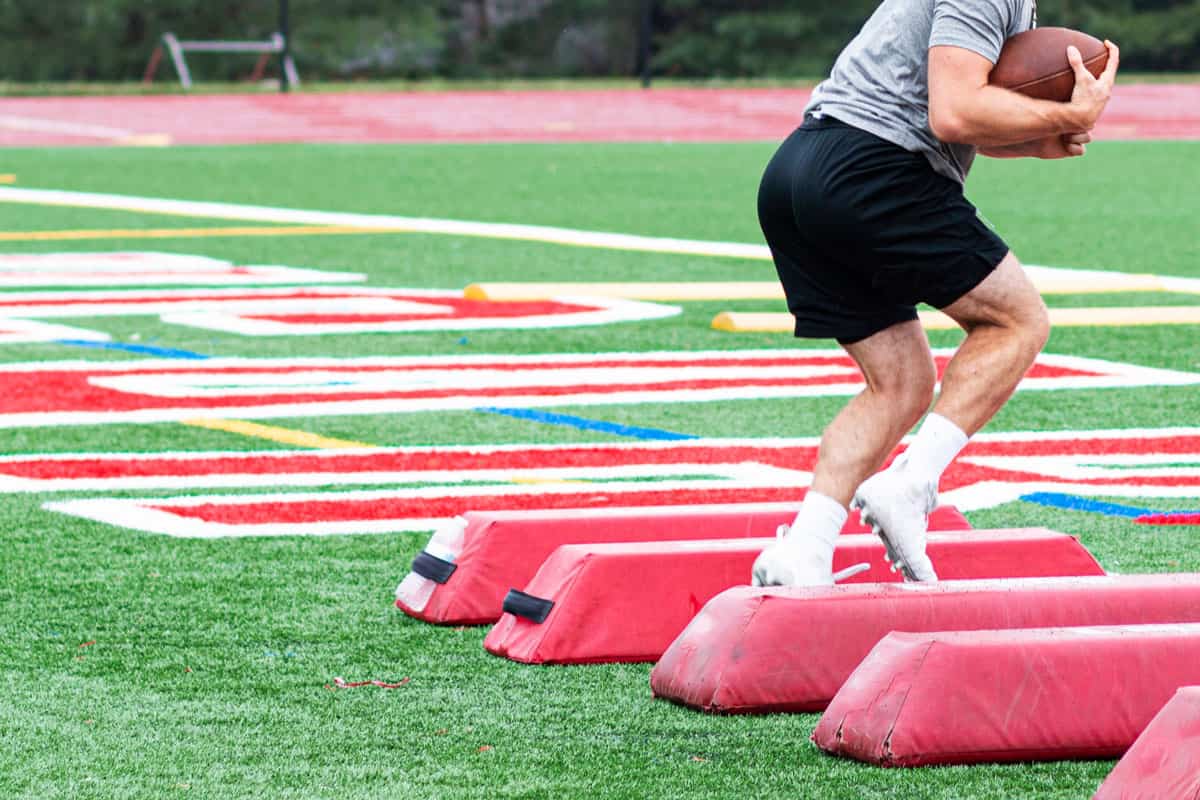
Now we should have an idea of the importance of getting proper cleats. Still, the aspect we can't escape from new ones is the breaking-in period. It's going to take some time for them to feel comfortable to wear. Of course, there are various ways to make the process go quicker.
Wear Them For Training
The first thing you want to do is use the cleats for practice. You don't want to use them in an actual game right away. If you experience discomfort after a short while, take them off.
However, keep taking them to practice. Even if you only wear the cleat for 15 minutes at each practice, it's still enough to alter them to fit your foot. You should be able to break them in after a few training sessions.
Soak Them In Hot Water
If they still feel rough on your feet, you might need to seek other methods. More specifically, you can soak your football cleats in hot water briefly. It's not the best solution because it can make them break down slightly quicker, but it helps to avoid the constant pain of wearing new cleats.
The process is simple. All you'll need is a large container. Fill it up with hot water. Though, it shouldn't be boiling. The water only needs to be hot enough to make the cleats malleable.
The only weird part of the process is that you'll have to wear them. So, put the cleats on and dip your feet into the container of hot water. Flex your feet and move around in them.
You should be able to notice them soften up. Once this happens, you can take the cleats for a short run. This way, you help shape them to your foot. Afterward, stick some newspaper inside them and let them dry for a few hours.
If you want an idea of how to go about the process, here's a YouTube video for guidance:
Messing Around With The Laces
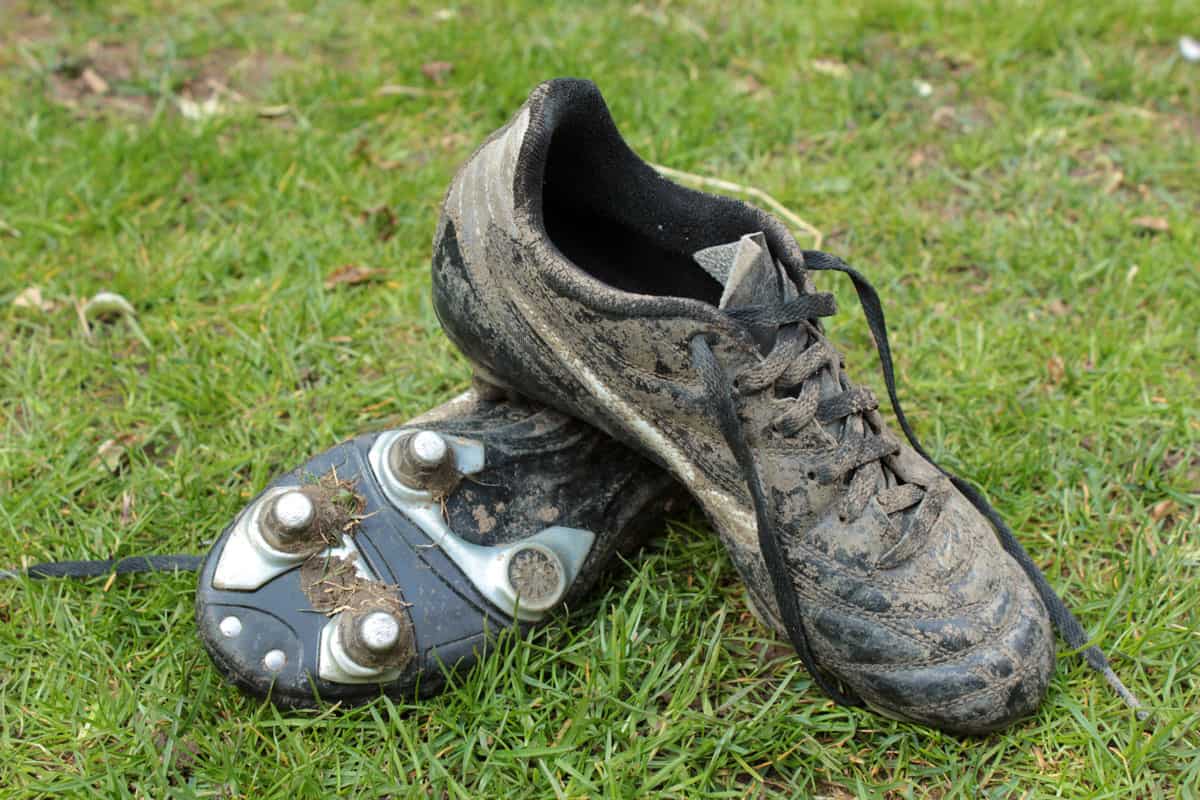
Another good trick for breaking new cleats in is to mess around with the laces. In other words, take the whole thing out. Then, start the lacing about one to two placements higher.
Then, use them for football practice. If the cleats begin to hurt your feet, take them off. When the cleats cause too much pain, try wearing them in a different setting. Take them for a jog on a field or something less intensive than football practice.
What Can You Do If The Cleats Still Hurt Your Feet?
There are other areas you can modify if your cleats still hurt you after various attempts to break them in. The first area that you should consider changing is the insoles. If you're still using the stock inserts, throw them out.
Then, you'll have to search online to find performance insoles that support lateral movements and running or sprinting. Sometimes all it takes to make the cleats more comfortable is getting a proper insole.
Consider Purchasing Cleats From A Different Sport
Pain is a good indication that you shouldn't be wearing something. So, if the problem persists, there's nothing you can do to make the cleat comfortable. Unfortunately, you will have to ditch them.
However, that doesn't mean you won't be able to find the right pair of cleats. Even if football cleats lean on the narrow side, there are plenty of options. You can try to search for football-specific cleats that accommodate wide feet.
Though, sometimes the solution is outside of your sport. In other words, you will need to look for shoes in another sports section. Some suggest looking at soccer cleats or maybe even lacrosse.
How Can You Keep Your Feet From Hurting After Football?

Football is an intensive sport. After playing, even if you wear the right cleats, your feet can still hurt after the game. What you do after the game is over can alleviate the pain or worsen it over time.
Sometimes, the pain is dull enough to ignore. So, you continue your training and push through it. When you do this, you can potentially increase the severity of the injury.
What might be dull pain at first can become intense after not giving the area adequate time to heal. If your foot hurts enough to cause limping, give the area enough time to rest for the first few days.
During recovery, wear any clothing that will support the affected area. You can consider wearing compression socks. Ice the area for about five minutes if you'd like.
As your foot gets better, slowly increase the workload on it. Although avoiding exercises at first is beneficial, working your way back to your normal load also helps facilitate recovery. This way, your muscles won't get stiff from inactivity.
Why Do Heels Hurt When Playing Football?
Many muscles work to make the human foot function as it does. When you strain one of them, the others will usually have to compensate. If your heels hurt when playing football, you might have plantar fasciitis.
It's a condition that develops when the plantar fascia is overused or injured. The plantar fascia is a long, flat ligament on the bottom of your foot. There are early signs of this condition that are often neglected.
It usually starts as heel pain that occurs once in a while. But, most athletes will usually push through it. And, if they push through it, it becomes worse over time.
Of course, if you feel you might have this injury, consult a doctor first. They can help you plan the next steps. It can take anywhere from 3-12 months to get better.
In Closing
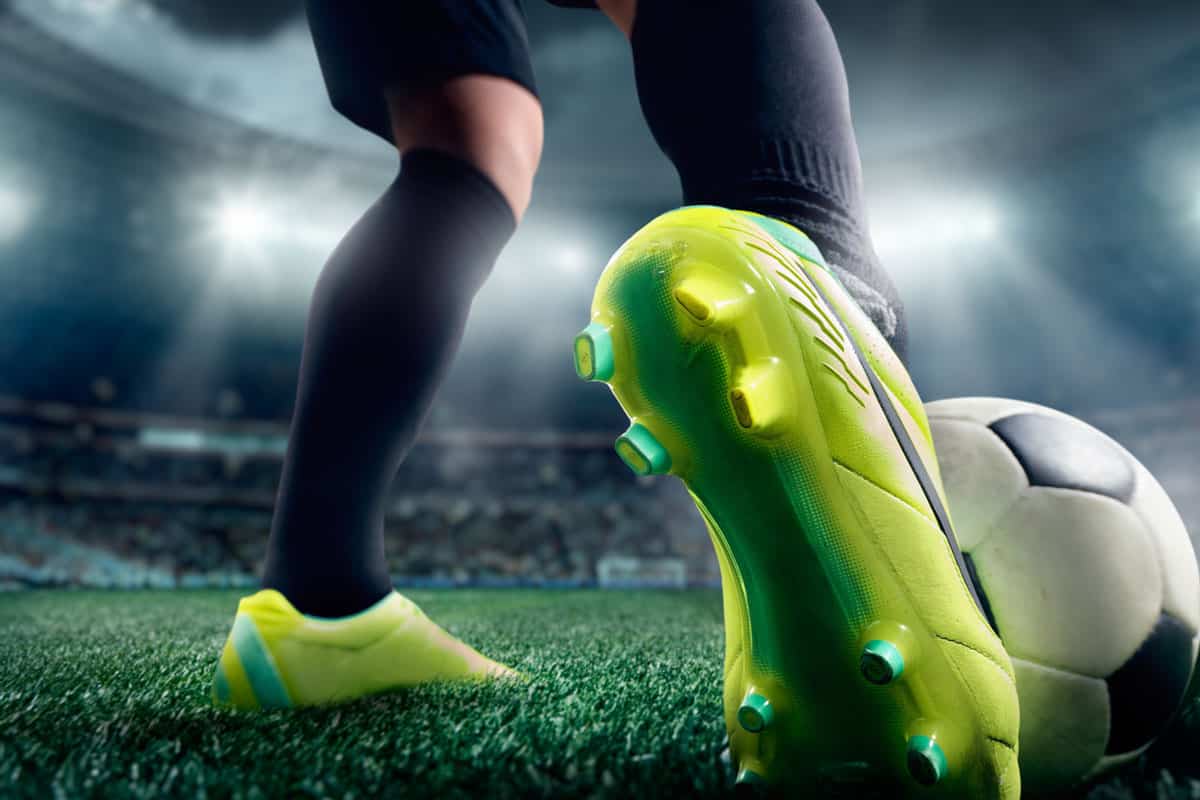
New football cleats will probably hurt your feet for the first few games you use them. But, that pain shouldn't be permanent. It's crucial that you wear the right cleats for your feet. We hope you found the information above helpful!
Before you go, do you have other football concerns? Are you considering getting new football gloves? If you want to find out if they should fit tight or loose, check out:
Should Football Gloves Be Tight Or Loose?
Are you thinking about purchasing cleats from a different sport for football? We can help! To find out more, check out:

